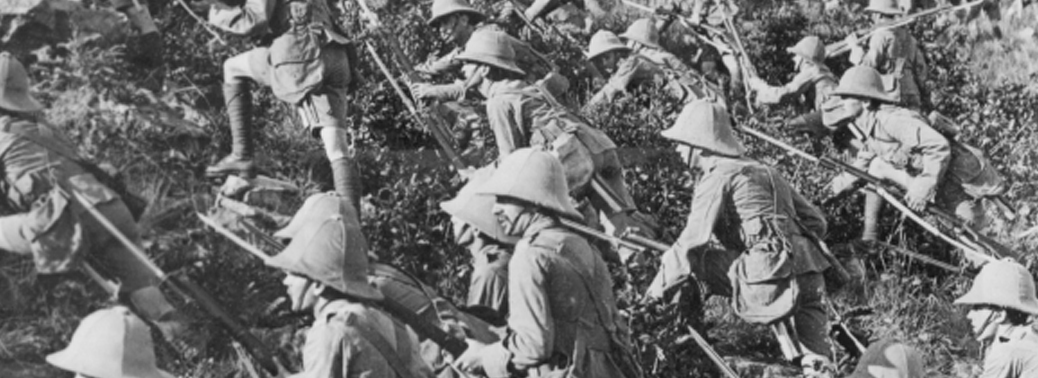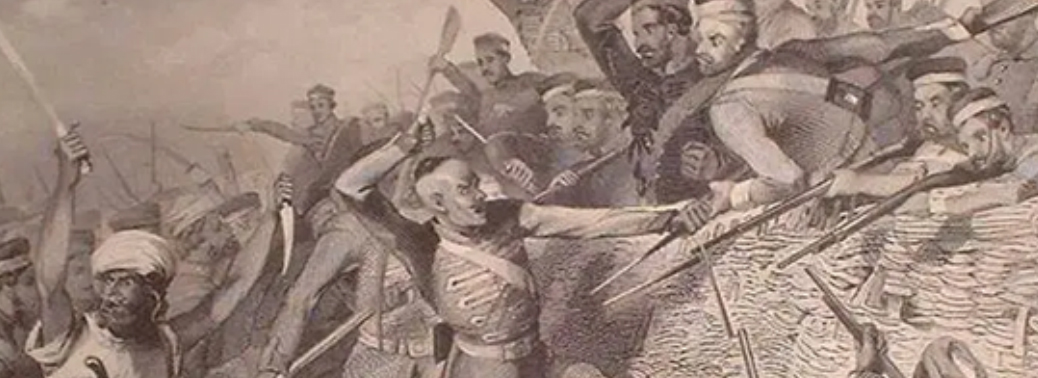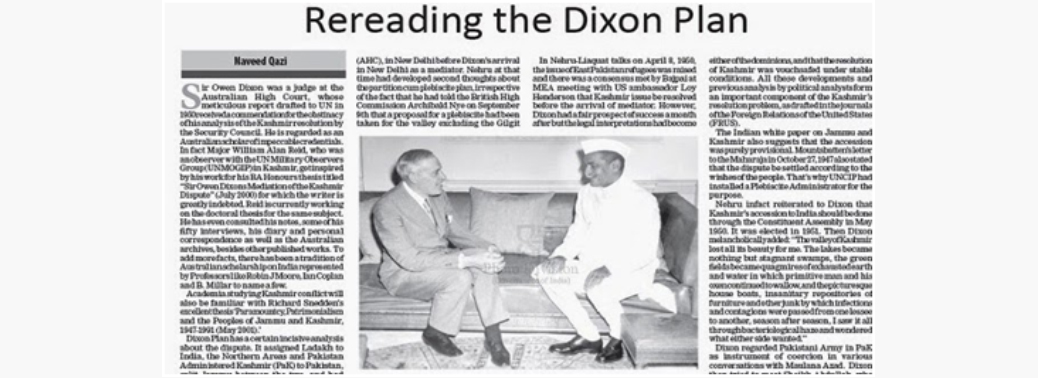Category: Modern History
BATTLE OF GALLIPOLI
19, Feb 2020

Why in News?
- Recently Turkey’s President has compared the struggle of Kashmiris with that of Turkey during World War I. India has strongly objected to the comparison of the Kashmir situation to the Battle of Çanakkale/Gallipoli of World War I (1914–18).
- It has to be noted that in September, 2019 Turkey had already raised the Kashmir issue in the United Nations General Assembly.
Background Info:
World War I:
- World War I was fought between the Allied Powers and the Central Powers during 1914 – 1918.
- Allied Powers: The main members were France, Russia, and Britain. The United States joined the Allies after 1917.
- Central Powers: The main members were Germany, Austria-Hungary, the Ottoman Empire, and Bulgaria.
About Gallipoli Campaign (1915-16):
- The Battle of Gallipoli or the Dardanelles Campaign was an unsuccessful attempt by the Allied Powers to control the sea route from Europe to Russia during the World War I.
- The campaign began with a failed naval attack by British and French ships on the Dardanelles Straits (connecting the Sea of Marmara to the Aegean Sea and the Mediterranean Sea) involving British and French troops.
- Failure: Lack of sufficient intelligence and knowledge of the terrain, along with a fierce Turkish resistance (Ottoman army), hampered the success of the invasion.
- It is considered to be one of the bloodiest battles of World War I leading to the death of tens of thousands of soldiers on both sides.
Significance of the Battle:
- The Battle resulted in the downfall of Winston Churchill and the emergence of the Turkish military hero, Mustafa Kemal Ataturk.
- The event is today one of the central pillars of the modern Turkish identity.
- The campaign is also seen to have seeded Australian and New Zealand National Consciousness.
PAIKA REBELLION (1817)
27, Sep 2019

Why in News?
- On September 27-28, President Ram Nath Kovind will visit Odisha’s Khorda district to lay the foundation of a memorial dedicated to the 1817 Paika Rebellion.
- Paika memorial is a project planned and proposed by the central government.
Paika Rebellion of Odisha (1817):
- Paikas had been recruited since the 16th century by kings in Odisha from a variety of social groups to render martial services in return for rent-free land (nish-kar jagirs) and titles.
- After entering Odisha in 1803, the British introduced new revenue settlements, due to which many Odia proprietors ended up losing their lands to absentee Bengali landlords.
- Changes in the currency and revenue systems meant the Odias had to pay taxes in silver, which was more expensive for them, and resulted in their further marginalisation and oppression.
- In 1817, some 400 Kondhs, who belonged to the state of Ghumsur, banded together to revolt against the British.
- Bakshi Jagabandhu Bidyadhar Mohapatra Bharamarbar Rai, the highest-ranking military general of King of Khorda Mukund Dev II, led the Paikas to join the uprising.
- During the course of the rebellion, government buildings in Banapur were set on fire, policemen and British officials were killed, and the treasury was looted.
- The uprising lasted for a few months but was eventually crushed by the better-equipped and trained forces of the East India Company.
- Bakshi escaped to the jungles, and ultimately surrendered in 1825 under negotiated terms.
Nationalist Movement or A Peasant Rebellion?
- The Paika Rebellion is one among the peasant rebellions that took place in India when the British East India Company was expanding its military enterprise.
- Because these uprisings violently clashed with European colonialists and missionaries on many occasions, their resistance is sometimes seen as the first expression of resistance against colonial rule — and therefore considered to be “nationalist” in nature.
Why Is the Rebellion Being Remembered Now?
- In April 2017, to mark the 200th anniversary of the Paika Rebellion, Prime Minister Narendra Modi honoured descendants from 16 families that were associated with the uprising.
- In July 2017, the Odisha government decided to formally ask the Centre to declare the rebellion as the “first war of independence in Indian history”. On this, then Culture Minister Ashok Chandra Panda had said, “In the real sense, the rebellion of Khorda in 1817 is the first well organised rebellion against the British.”
- In May 2018, after a review of school textbooks, the NCERT introduced a page on the Paika rebellion in the Class-8 history textbook. In December 2018, Prime Minister Modi released a stamp and a coin to commemorate the rebellion.
DIXON PLAN OF 1950
07, Aug 2019

Context-
- The idea of dividing Jammu and Kashmir into two or more parts has a chequered history, tracing its origin to the Dixon Plan of 1950.
Who Was Dixon?
- Owen Dixon was an Australian jurist chosen by the United Nations to mediate between India and Pakistan on the J&K issue.
- His report of September 1950, suggested a package that did not find acceptance from India.
Dixon Plan:
- Plan had assigned Ladakh to India and northern areas and Pakistan Occupied Kashmir to Pakistan, besides splitting Jammu between the two. It had proposed a plebiscite in the Kashmir valley.
- He saw the river Chenab as a natural border.
- This would have meant that most of the Muslim-dominated areas of what is Indian-administered Kashmir would go to Pakistan, but the Hindu-dominated area would have remained with India.
- The plan met with opposition from those with pro-independence sentiments, but it had a more serious flaw. The large wave of migration caused by the imposition of such a border would involve the displacement of many thousands of people, which could itself lead to violence.
- Limited Plebiscite
- A plebiscite be taken “by sections or areas” and the allocation of each section or area be made according to the result of the vote.
- Without holding a plebiscite, areas certain to vote for India and those certain to vote for Pakistan “be allotted accordingly and the plebiscite be confined only to the uncertain area”. The “uncertain area” according to Sir. Dixon appeared to be the “Vale of Kashmir and perhaps some adjacent country.”
- Ambedkar:
- B.R. Ambedkar, after quitting as Law Minister from the Jawaharlal Nehru Ministry, had suggested the formation of three zones: the area held by Pakistan, the Valley and Jammu Ladakh.
- He had also favoured a plebiscite only in the Valley.
Another Plan: Dickie Bird Plan, 1947:
- Mountbatten prepared “Dickie Bird Plan” for India’s independence.
- The main proposal of this plan was to that provinces should become first independent successor states rather than an Indian Union or the two dominions of India & Pakistan.
- As per this plan all the provinces viz. Madras, Bombay, United Provinces of Bengal, Punjab & North West Frontier etc. were proposed to be declared Independent.
- The states later would decide whether to join constituent assembly or not.
- This plan was not discussed in details with leaders of India and Mountbatten discussed just informally.
- He gave the plan a final touch and sent to London. Later when he moved to Shimla, Nehru joined him as a guest.
- Here the details of the plan were put by Mountbatten before Nehru. Nehru rejected the plan right away and told him that this plan would invite Balkanization of India and would provoke conflict and violence.
- Consequently, Mountbatten cabled to England that this plan was cancelled.
A FILM ON LIFE AND TIMES OF SHEIKH MUJIBUR RAHMAN
08, May 2019

Why in News:
- State broadcaster Prasar Bharati will be co-producing a feature film directed by Shyam Benegal on the life of the founding father of Bangladesh, Sheikh Mujibur Rahman, and also a documentary on Bangladesh Liberation War.
Bilateral meet
- The decision was taken after a Bangladeshi delegation led by adviser to the Prime Minister of Bangladesh, and including Bangladesh High Commissioner to India.
- The announcement comes in the backdrop of raging debate on the National Register of Citizens in the northeast that seeks to disenfranchise Bangladeshi migrants.
- The announcement is a culmination of a three-year dialogue between the two countries on the issue.
Liberation War
- Co-production of a documentary on the Bangladesh Liberation War was also discussed It was mutually agreed that the director of the documentary would be from Bangladesh who would be assisted by a co-director from India.
- A working agreement on cooperation between All India Radio and Bangladesh Betar was also agreed upon.
Sheikh Mujibur Rahman
- Sheikh Mujibur Rahman, famously known as Bangabandhu was declared the first president of the People’s Republic of Bangladesh, while Vice-president Syed Nazrul Islam became the acting president in the absence of Bangabandhu.
Mujibnagar Day
- Mujibnagar Day is observed on 17th April because on this day senior leaders of Awami League assembled at Baidyanathtala—a mango orchard that was later named as Mujibnagar—in Meherpur district on April 17, to form the provisional government of independent Bangladesh.
- On the Occasion Bangladeshi PM Sheikh Hasina paid tributes to Father of the Nation Bangabandhu Sheikh Mujibur Rahman at the Bangabandhu Memorial Museum, in Dhanmondi, Dhaka






